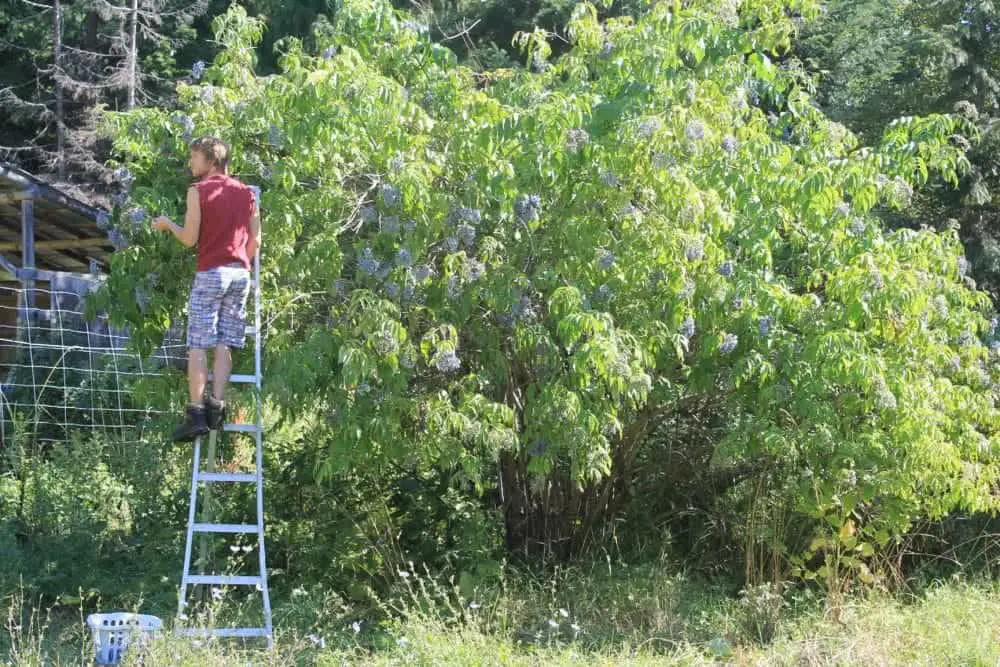
When we lived in a forest there were so many wild plant guilds that we didn’t need to plant a food forest garden.
Now that we live in a wide-open valley, we have the benefit of flat land but we’d like to increase biodiversity with pollinators and permaculture in our backyard. Our goal is to create a couple of permaculture food forests to integrate with our rotational chicken runs.
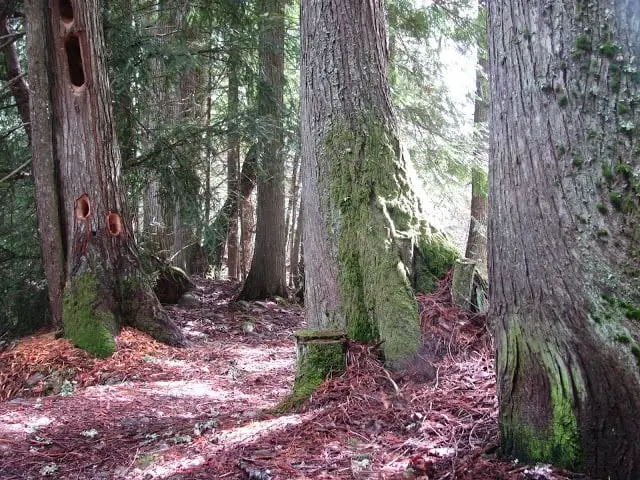
When you observe the forest floor you’ll see many layers & mulch covering that top layer.
You can replicate mulching garden beds and create small or large plant guilds in your own backyard while using organic gardening. Protecting your top soil helps to retain water, increase soil microorganisms, build better soil fertility and soil carbon is preserved.
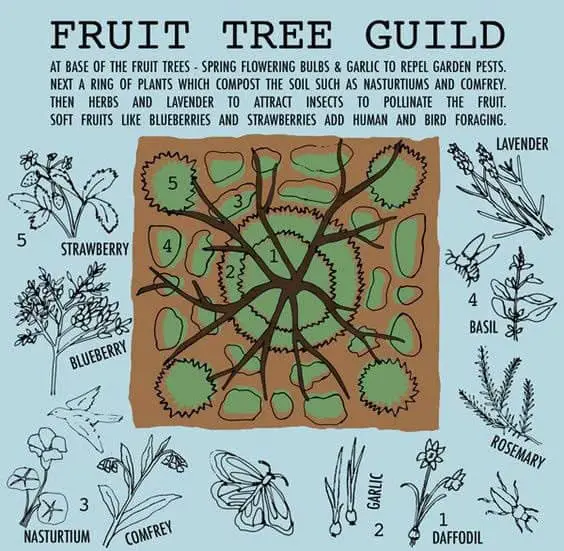
Benefits of Food Forests and Plant Guilds
Even if you’re a home gardener, you can create mini plant guilds with polyculture garden beds and grow few useful plants around your fruit trees instead of just having grass. You can mulch your paths & garden beds and build your soil.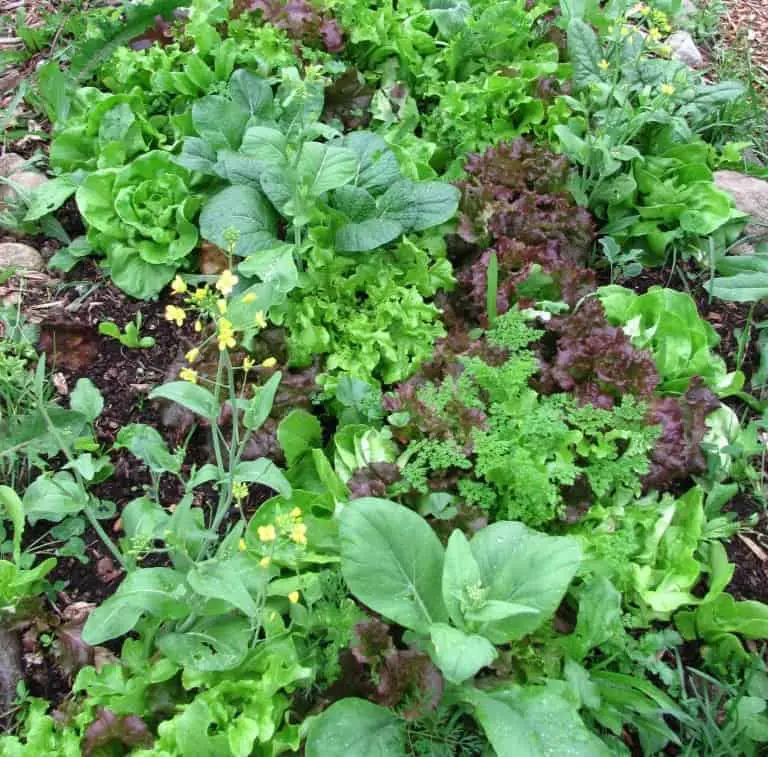
Why Should you Plant a Food Forest?
When you observe nature, the places that thrive are rich in biodiversity. These wild places have many species of plants and animals, protected top layers of soil with lots of decomposition, plant and animal life cycles and seasonal flow. When most people garden they buy soil amendments to add to their garden beds. Many people will have fruit trees with only grass below them. I’ve talked about the importance of increasing biodiversity and attracting wild pollinators.
The goal of a food forest garden is to create plant guilds that are mutually beneficial, while preserving & building soil fertility.
Elements of a Food Forest Garden
When you step into a thriving ecosystem it’s usually a forest with multiple layers. You have trees of different heights, some in full sun, some shading out other plants. You often see vines climbing up trees or trailing along the ground, flowers, ground covers and herb layers. Many plants pop up seasonally, for example in the spring nettles come up then decay for other plants later in the season. You’ll have rotten logs with fungi, some plants growing larger than others and shrubs.
In permaculture design these layers are called the 7 layers of a food forest.
- Canopy/Tall Tree
- Sub canopy/large shrub
- Shrub layer
- Herbaceous layer
- Groundcover layer
- Underground layer
- Vertical/climbing layer
Some permaculture design you’ll see will actually add two more layers to create 9 layers too:
- Wetlands
- Fungal layer

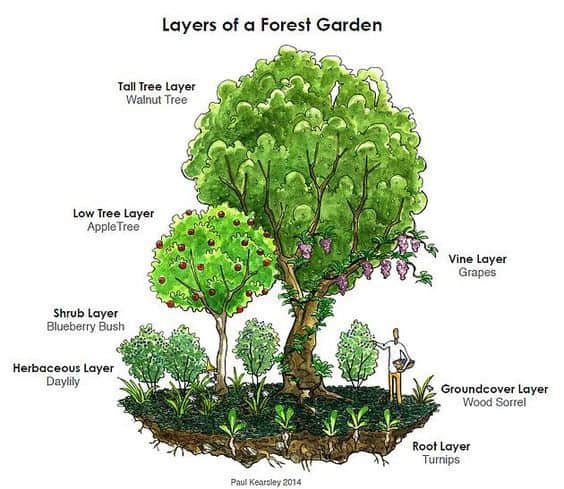
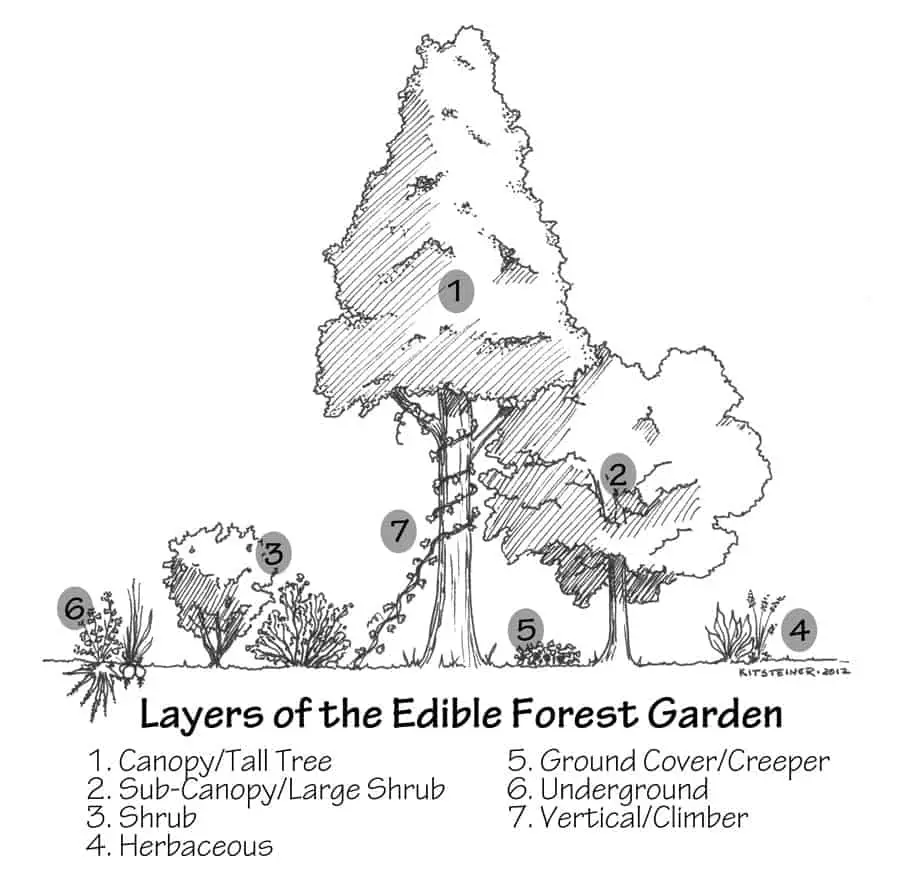
from Temperate Climate Permaculture
When you create your own food forest you want to replicate these layers.
A food forest might take time to grow depending on what plants, trees or bushes you choose. Establishing a food forest is a long-term but worthwhile investment. Growing smaller plant guilds will yield sooner. You can increase biodiversity and soil fertility with these steps:
- Chop & Drop– growing plants that you chop down to become mulch and soil fertility for surrounding plants, trees and bushes. You can grow plants like comfrey for this purpose, or use weeds as mulch like burdock leaves.
- Increase Biodiversity– growing plants that attract pollinators to increase pollination of fruit trees, using companion planting to attract predators of pests for organic pest control.
- Dynamic Accumulators- are plants that pull nutrients from deeper within the soil through their roots. These plants can then be used as a fertilizer, or as part of a fertilizer mix, for other plants that may be deficient in those particular nutrients. They play an important role in many permaculture guilds.
- Understanding ‘weeds’- Weeds are commonly seen as plants you want to get rid of, but in nature weeds are plant matter that’s continuously added to the soil to increase fertility. Learn more about the ecological understanding of weeds.
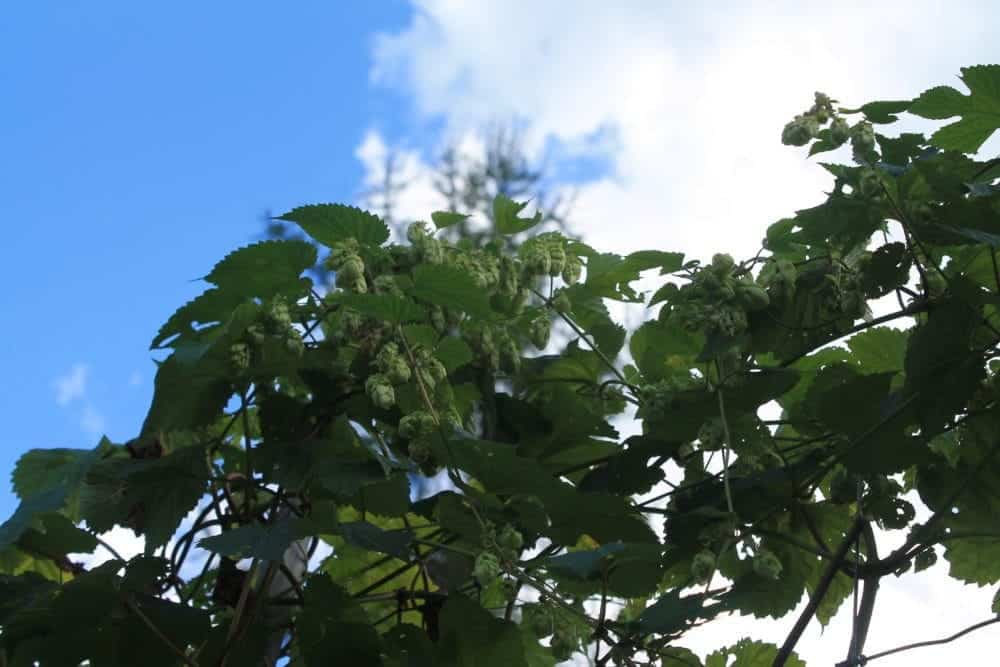
Create your own plant guilds
If you don’t have the space to grow a food forest garden, you can also create smaller plant guilds. You can add layers even if you don’t have a food forest by growing vinning plants such as hops, grapes, hardy kiwi berries, squash.
How to design your plant guilds & food forests
- Pay attention to your sun patterns so you know where to plant them. Although a veggie garden needs good sun exposure, you can create plant guilds suited to partial shade in your backyard depending on the plants.
- Write down a list of taller plants or trees that you’d like to grow. For example, say you want to grow 2 apple trees, then make a list of perennial plants that you could grow around your trees.
I enjoy doodling different plant guilds for our backyard
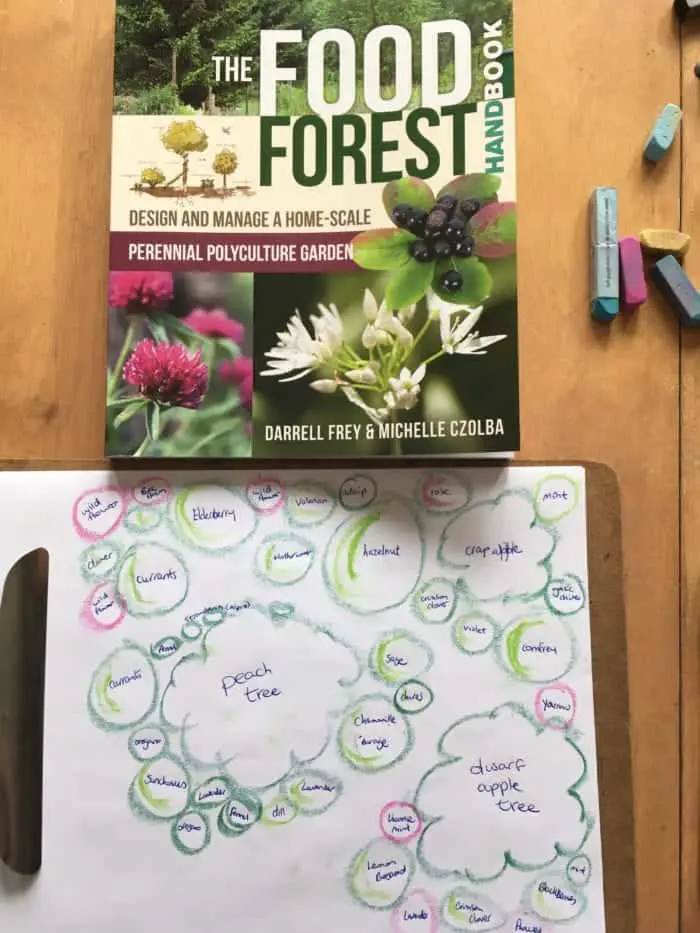
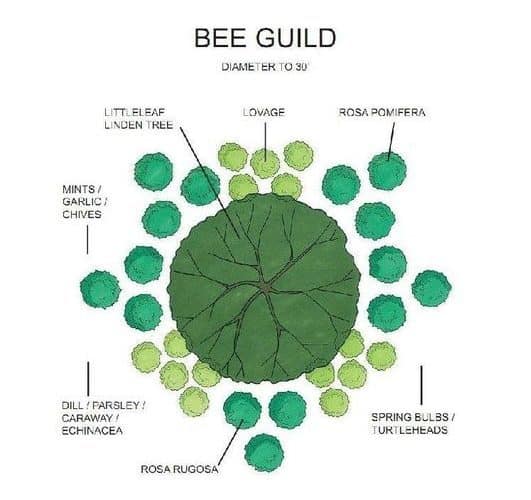
- It helps to learn more about plant guilds from books. There’s a fantastic free ebook from tcpermaculture to give you some inspiration.
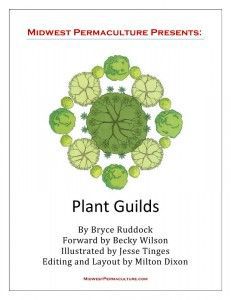
There are some fantastic food forest books too.
I love this plant guild list from zumbido-vida, it gives you an idea of what to plant in each layer
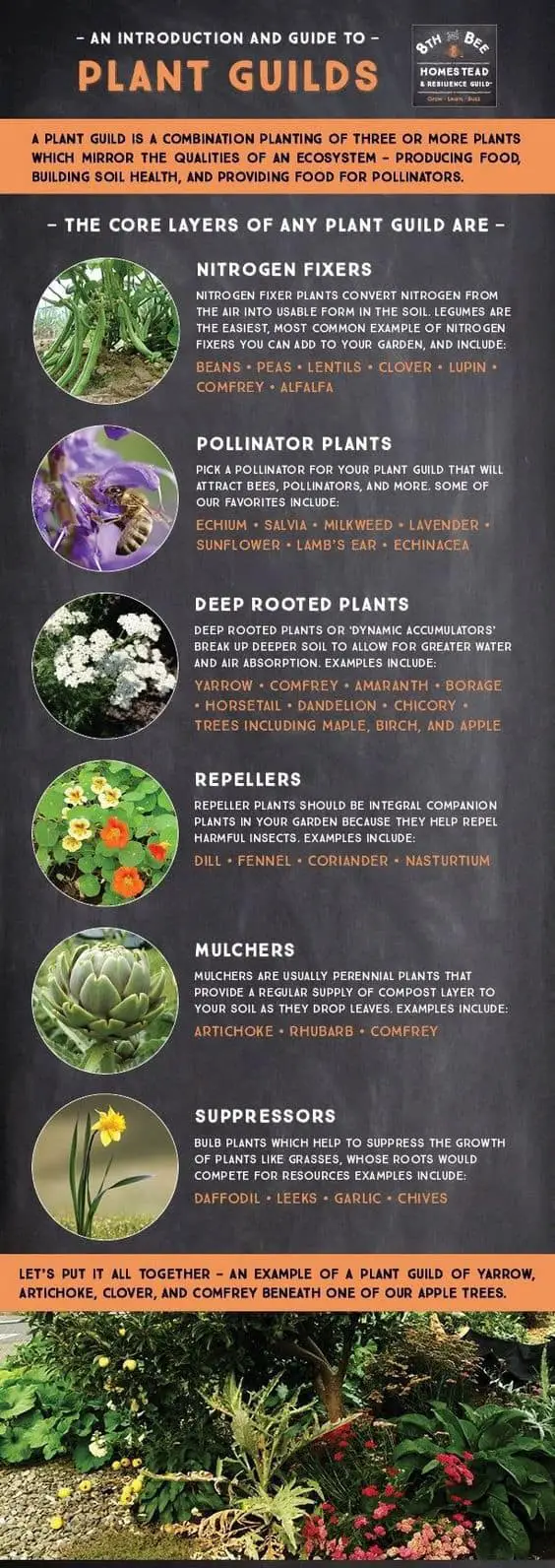
Consider adding a swale to your food forest for catching water.
A swale will create an underground reserve to nourish your plants underground which is especially important during periods of drought.
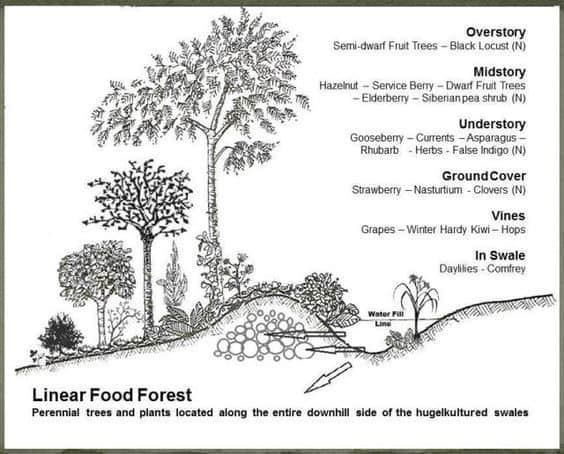
FREE downloadable ebook from Midwest Permaculture
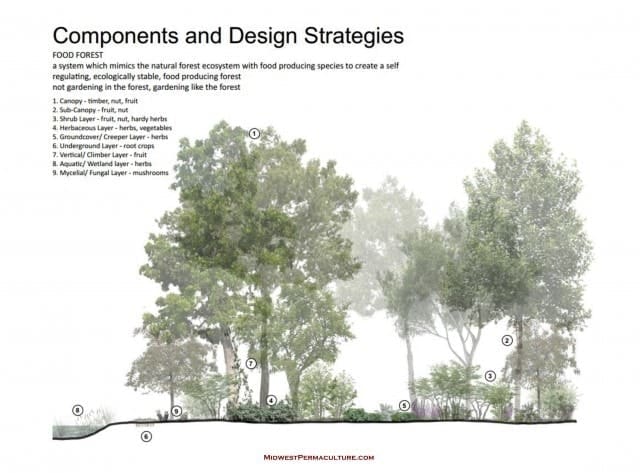
Have you planted a forest garden? I’d love to hear more & feel free to share in the comments 🙂

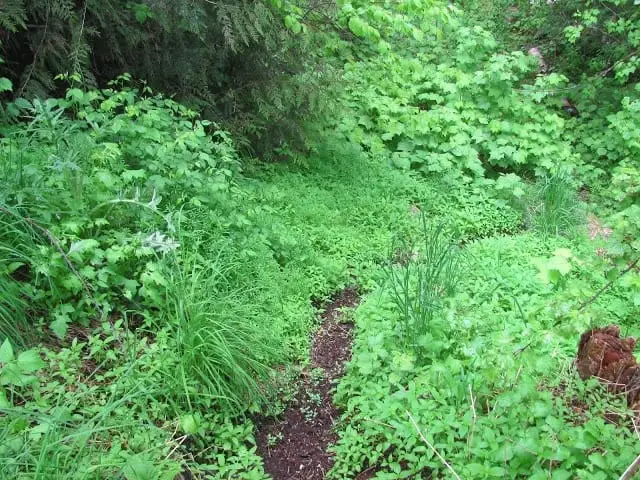
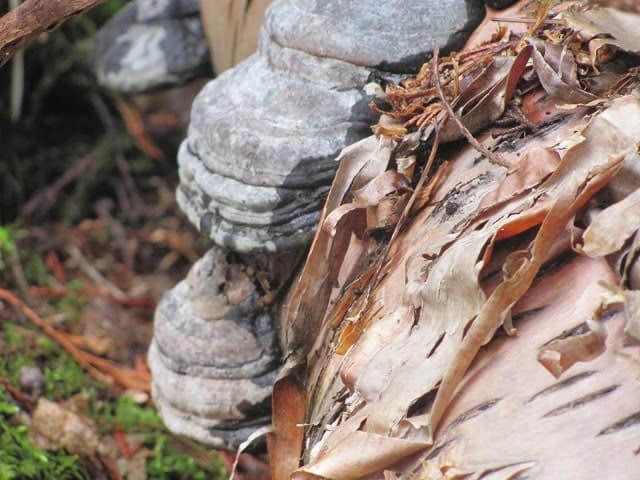
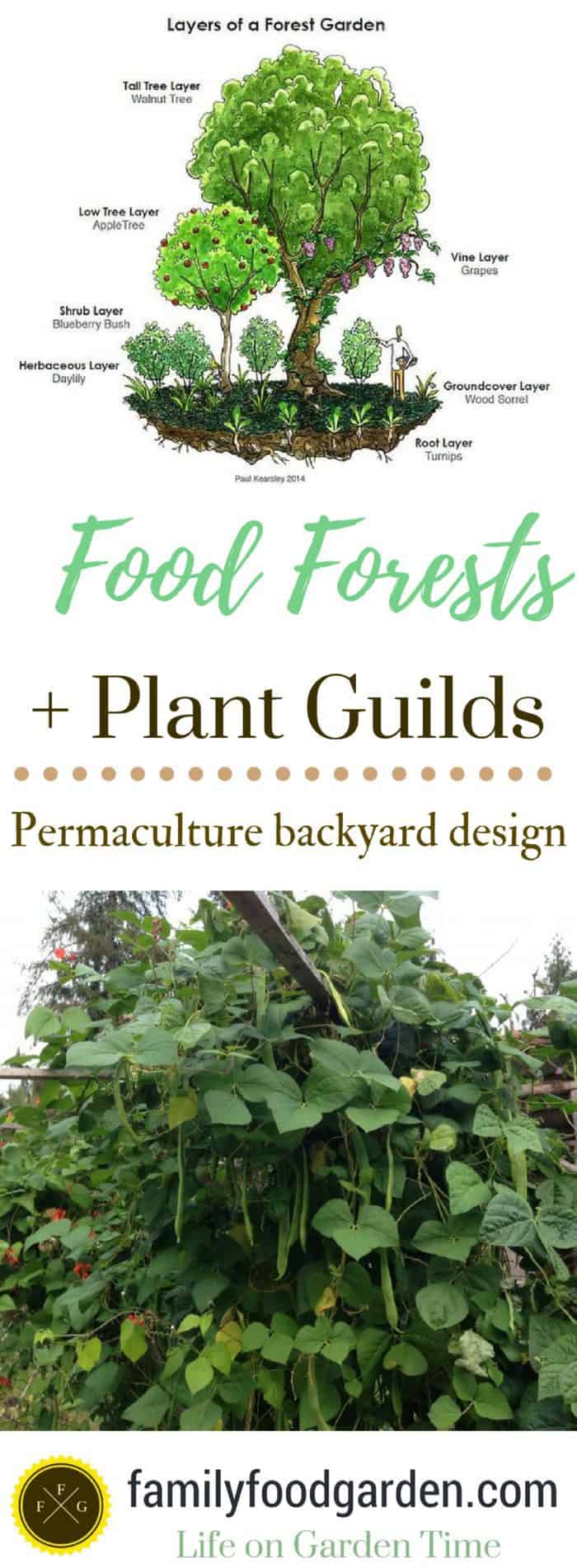
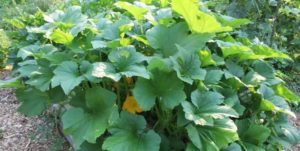
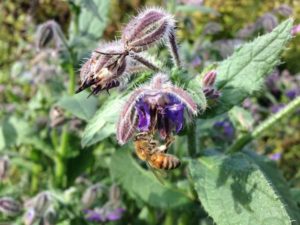
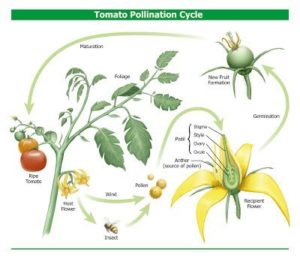
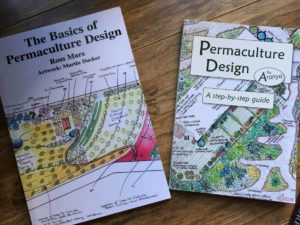
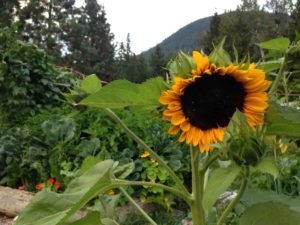
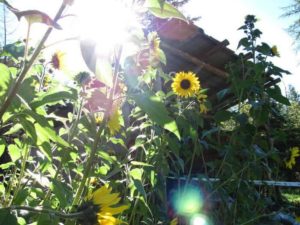
I would like to start planting guilds under my fruit trees. But, there are so many gophers and ground squirrels that anything I put in the ground without chicken wire or hardware cloth disappears.
I won’t use poison and I’m not a fan of traps
Any suggestions?
Thanks
We get a lot of meadow voles here, and a neighbor said she lost most of her trees over the winter except the ones that had lavender planted around the base. I’ve been planting mint and lavender in-between the trees. We’ve had to use hardwire under our raised beds to stop the tunneling. It’s hard with trees as they eventually need more root space.. *so far* we haven’t lost any trees, but ground squirrels dig much deeper and are ok with open land (our meadow voles have been greatly reduced since having large areas mowed down, although eventually our guild will grow and create that hiding spots again. I’m not sure what your land set up is and if you can have chickens, but we have a chicken run around our garden and we’ve planted new fruit trees inside the chicken run (we just can’t have our herb layer in there).
Really love what your doing. Hope to get involved one day. What books would you recommend for a rookie 24 year old male.
Ill be living in the semi high desert of so cal. 2900 ft avg 6 inch rain annually. Dry windy heat. I actually enjoy it there. Feels like a breath of fresh air since ive grown up in the Los angeles area. Just looking for some direction. I wish Geoff Lawton taught here. Thanks.
Hi, Am new to farming. I need to know the different plants available in the different layers mentioned by you. Am from India, It would be nice to have native types of these 7 layer plants.. So how shall identify or know the names of those? Can you suggest me some books or people?
you can get the Indian region tees and plats list from subhash palekar 5 layer model
I feel the same about hot an dry climate. Living in the Phoenix area. It is hard to plan a design of what I would grow in my food forest. Help from others would help.
HI! I’m new to the whole permaculture world and I am loving every second of it. I’m just curious, how do you manage deer? hogs? and all the other wildlife just decimating your food area without a fence? We live on a large piece of land and have lots of wild hogs and deer to say the least! Just curious how this is managed? I”m fine if they eat some right? but usually its not just some, its cleaned out! Thanks for any insight or suggestions!
HI! You should watch Youtube for this! There is a channel called “PermaPastureFarms” and he talks about this. Good Luck!
I would try a double row living hedge if you have the space. It’s built like a food forest but meant to fence in (or out) livestock. It creates habitat for birds, deer can munch on it but won’t jump over once they can’t see over it. Don’t know if it works for your hog problem though.
Amazing work!! Looking for more from you.
I would like to start adding plants under our apple trees. However our trees are 20+ years old and very large and wide. I’m wondering if it would be too shady for the type of plants you recommend like garlic, daffodils, and blueberry?
If you’re in the northern hemisphere, keep the tree at the north end of your planting area and your plants will be exposed the whole time the sun moves from east to west. Save the under canopy for things that prefer dappled sun and the north shore de for shade lovers.
What works well with pecan trees? I live in SW TN which is zone 7.